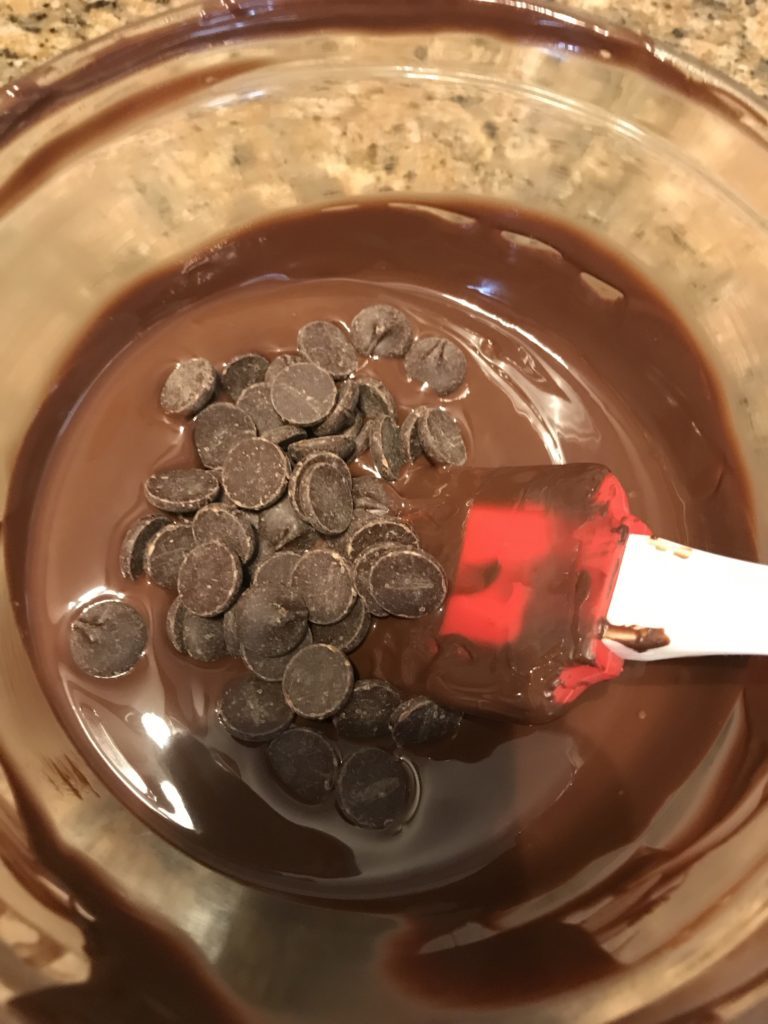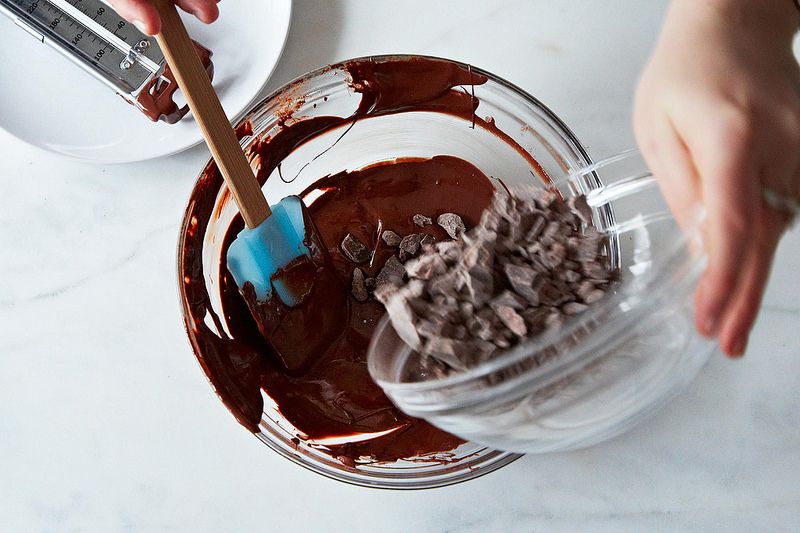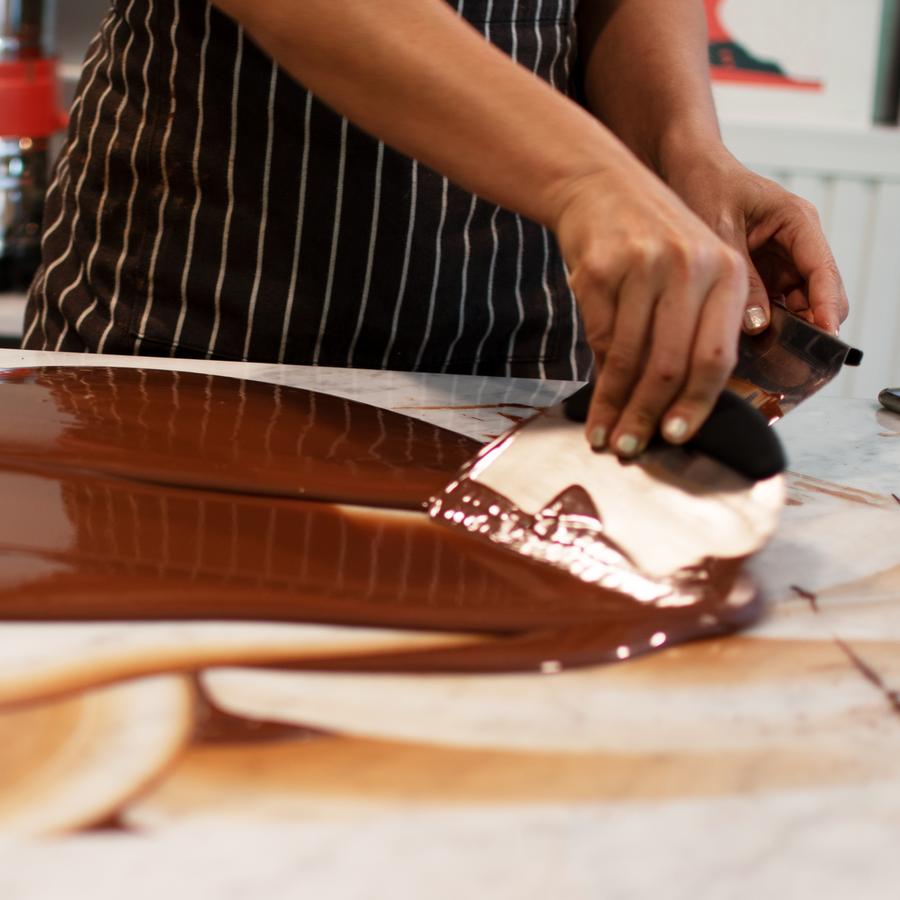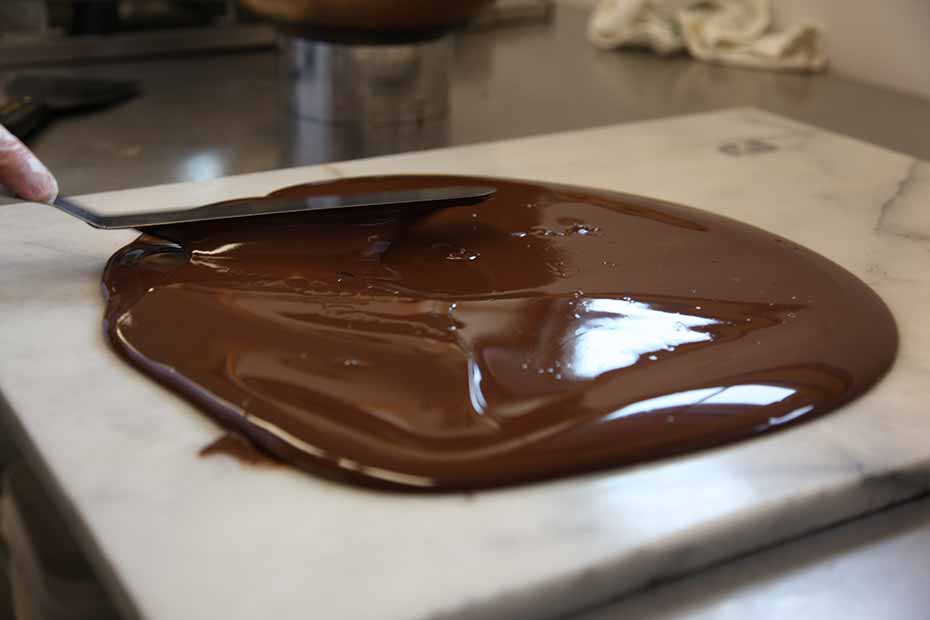Chocolate is a delightful treat enjoyed by all. Chocolate is known for its signature glossy texture, delightfully intense sweet flavor and its ability to melt in your mouth. Next time you bite into a chocolate bar, observe the “snap” sound that chocolate makes when you bite it. All these properties of chocolates are due to a process called Chocolate tempering.
What is Chocolate Tempering?
Before we understand the process of chocolate tempering, we must know the components of chocolate.
Chocolate is made up of cocoa butter, cocoa solids, sugar, (sometimes milk solids), and flavorings. Cocoa butter is the most crucial component in the process of tempering, It is the fat of the chocolate (cocoa butter) that gives chocolate that silky, mouthfeel. A good quality bar of chocolate contains only cocoa butter and no other fat. Cocoa butter is the reason we have to temper chocolate. When cocoa butter melts it can form different kinds of structures. Chemically, Cocoa butter can form six different kinds of structures. When tempering occurs, chocolatiers are aiming for cocoa butter crystal to form the fifth structure, also known as the beta crystals. It is because of these beta crystals that chocolate will be having that sturdy exterior and soft gooey interior.
Chocolate Tempering is the heat process of refining the texture of chocolate. In laymen’s terms, tempering is the process of heating and cooling chocolate until the chocolate crystals are stabilized. This process gives the chocolate a smooth, glossy, and sturdy finish.
Why Must Chocolate be Tempered?
The main purpose of tempering chocolate is for that glossy sheen, smooth texture and sturdy structure. When chocolates are not tempered. They tend to have white, waxy streaks. When you eat untempered chocolate, the chocolate though it tastes good it will have a crumbly texture and it wouldn’t melt.
How to Temper Chocolate?
There are many different ways in which chocolate can be tempered, but these methods are variations of the three classic methods
1. Seeding Method
2. Tabling Method
3. Controlling Temperatures.
1. Seeding Method
In the first method, chocolates are chopped into small, uniform chunks, by doing so the chocolate will melt evenly and also prevents the chocolate from burning. then 1/3 of the chocolate is kept aside while the remaining chocolate is made to melt. After two-thirds of the chocolate is melted, the remaining chopped up chunks are added and mixed until the mixture is smooth.
2. Tabling Method
In this method, two-thirds of the chocolate poured on the a marble table top and it is ruffled with palate knives (stainless steel is considered). This causes the chocolate to cool down thereby stabilizing the fat crystals. Then another one-third of the chocolate is added and scraped a couple of times on the table top. After this step the chocolate mix is poured into a chocolate tempering machine and a chocolate melter, where the temperature is maintained to 28- 29 degrees Celsius.
Tabling method is the preferred method by pastry chefs and chocolatiers, if you see this method in person it could look very intimidating and scary, but this method is vital for chocolatiers to perfect the craft of chocolate making
3. Controlling the temperatures
In this method, chocolate is heated to varying temperatures. Different types of chocolate have different kinds of cocoa concentration, based on the concentration of cocoa, the temperature must be altered. For instance, dark chocolate tempers at a temperature of 31-32 degrees celsius and Milk chocolate tempers at a temperature of 30 – 31 degrees celsius and white chocolate tempers at a temperature of 27-28 degrees celsius.
Chocolatiers must also take into account the different stages at which cocoa butter stabilizes. The stage chocolatiers aim for is stage five.
When chocolate is heated at around 17 degrees celsius chocolate reaches stage 1, at this stage, the chocolate is soft, crumbly, and melts easily.
As the temperature increases to 21 degrees celsius chocolate reach stage 2, at this stage chocolate is still too runny.
At stage three when the temperature is 26 degrees celsius, the chocolate tends to become firm, but it still doesn’t have that signature snap.
At stage four when the temperature is 28 degrees celsius, the chocolate tends to become firm, it snaps well but it still melts very easily.
At stage five (the stage chocolatiers aim for) when the temperature is 34 degrees celsius the chocolate gets glossy, firm, it snaps and melts at body temperature. This is the stage where chocolate is known to be properly tempered.
However at stage six when the temperature is 36 degrees, The chocolate tends to get hard and tough.
In factories, however, chocolate tempering machines are used, these machines automatically control the temperature so that chocolate reaches the fifth stage, also known as beta V form.
The tempering machine does this by heating the chocolate to a very precise temperature and then cooling it slightly and reheating in a very particular manner.
Now that you know all about tempering, we hope you know the effort and skill that goes into making this sweet delight we call chocolate. If you want to satisfy your sweet tooth with some scrumptious, dainty treats, www.chocovira.in has got you covered. We make the most delicious chocolates with exciting flavors.




